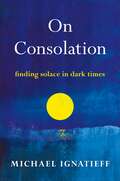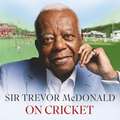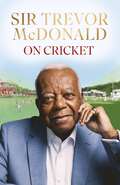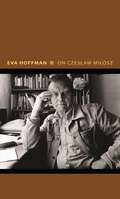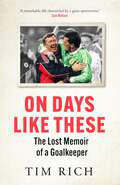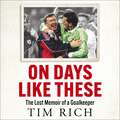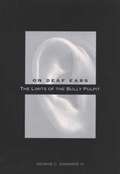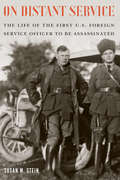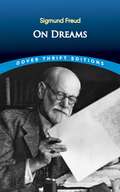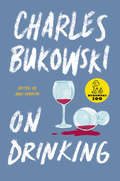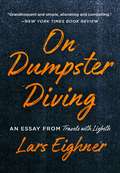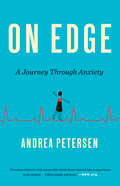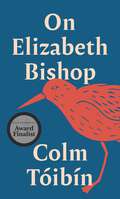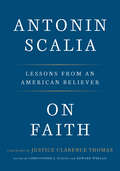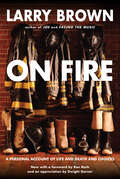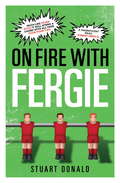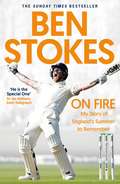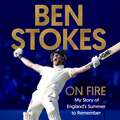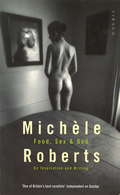- Table View
- List View
On Consolation: Finding Solace in Dark Times
by Michael IgnatieffTimely and profound philosophical meditations on how great figures in history, literature, music, and art searched for solace while facing tragedies and crises, from the internationally renowned historian of ideas and Booker Prize finalist Michael IgnatieffWhen we lose someone we love, when we suffer loss or defeat, when catastrophe strikes—war, famine, pandemic—we go in search of consolation. Once the province of priests and philosophers, the language of consolation has largely vanished from our modern vocabulary, and the places where it was offered, houses of religion, are often empty. Rejecting the solace of ancient religious texts, humanity since the sixteenth century has increasingly placed its faith in science, ideology, and the therapeutic.How do we console each other and ourselves in an age of unbelief? In a series of lapidary meditations on writers, artists, musicians, and their works—from the books of Job and Psalms to Albert Camus, Anna Akhmatova, and Primo Levi—esteemed writer and historian Michael Ignatieff shows how men and women in extremity have looked to each other across time to recover hope and resilience. Recreating the moments when great figures found the courage to confront their fate and the determination to continue unafraid, On Consolation takes those stories into the present, movingly contending that we can revive these traditions of consolation to meet the anguish and uncertainties of our precarious twenty-first century.
On Cricket
by Sir Trevor McDonaldSir Trevor McDonald is one of Britain's most celebrated broadcasters and his devotion for cricket is almost as well-known as his legendary professional achievements.In this inspirational memoir, On Cricket, Sir Trevor explores his childhood in the Caribbean and celebrates his life-long love of the sport that followed him no matter where in the world his illustrious journalistic career would take him.Sir Trevor offers a wide-ranging commentary on cricket as a common language between England, the West Indies and beyond - a sense of belonging that knows no borders - and celebrates cricket as an engine of national identity and an essential feature of daily life and community.An exceptional storyteller and commentator, On Cricket is a love letter to the sport and a study of Sir Trevor's oldest and most consistent passion: watching, debating and playing the gentleman's game.
On Cricket
by Sir Trevor McDonaldSir Trevor McDonald is one of Britain's most celebrated broadcasters and his devotion for cricket is almost as well-known as his legendary professional achievements.In this inspirational memoir, On Cricket, Sir Trevor explores his childhood in the Caribbean and celebrates his life-long love of the sport that followed him no matter where in the world his illustrious journalistic career would take him.Sir Trevor offers a wide-ranging commentary on cricket as a common language between England, the West Indies and beyond - a sense of belonging that knows no borders - and celebrates cricket as an engine of national identity and an essential feature of daily life and community.An exceptional storyteller and commentator, On Cricket is a love letter to the sport and a study of Sir Trevor's oldest and most consistent passion: watching, debating and playing the gentleman's game.
On Czeslaw Milosz: Visions from the Other Europe (Writers on Writers #14)
by Eva HoffmanA compelling personal introduction to the life and work of Nobel Prize–winning writer Czesław Miłosz from his fellow Polish exile and acclaimed writer Eva HoffmanCzesław Miłosz (1911–2004) was a giant of twentieth-century literature, not least because he lived through and wrote about many of the most extreme events of that extreme century, from the world wars and the Holocaust to the Cold War. Over a seven-decade career, he produced an important body of poetry, fiction, and nonfiction, including classics such as The Captive Mind, a reflection on the hypnotic power of ideology, and Native Realm, a memoir. In this book, Eva Hoffman, like Miłosz a Polish-born writer who immigrated to the West, presents an eloquent personal portrait of the life and work of her illustrious fellow exile.Miłosz experienced the horrors of World War II in Warsaw—the very epicenter of the inferno—and witnessed the unfolding of the Holocaust from up close. After the war, he lived as a permanent exile—from Poland, communism, and mainstream American culture. Hoffman explores how exile, historical disasters, and Miłosz’s origins in Eastern Europe shaped his vision, and she occasionally compares her own postwar trajectory with Miłosz’s to show how the question of “the Other Europe” is still with us today. She also examines his later turn to the poetry of memory and loss, driven by the need to remember and honor his many friends and others killed in the Holocaust.Combining incisive personal and critical insights, On Czesław Miłosz captures the essence of the life and work of a great poet and writer.
On Days Like These: The Lost Memoir of a Goalkeeper
by Tim Rich'Emotional, insightful, beautifully written. A story of making saves and being saved. The best football book I have read this year.' Henry WinterJoe Sealey was watching his son play for Manchester United's Under-14s when a man came up to him and said: 'I've got your dad's book.'Joe's father, Les, had been Manchester United's goalkeeper but had died of a heart attack in 2001 at the age of 43. His death tormented Joe, who had been West Ham's reserve keeper. Joe had given up on football, slipping into an alcohol and drug addiction that almost killed him. He had forgotten what his father's voice sounded like. Now, here it was in form of a Tupperware box full of cassette tapes.The centrepiece of the tapes is the most important game in the modern history of Manchester United, the 1990 FA Cup final. After three barren years at Old Trafford, Alex Ferguson was on the brink of dismissal. There was just the FA Cup final left. He knew that, if it was lost, he would almost certainly be sacked. After the first game against Crystal Palace was drawn 3-3, he dropped his goalkeeper, Jim Leighton, who had been with Ferguson for most of his managerial career, and replaced him with Sealey, who had played just two matches in a year.The replay was won and by the time Sealey left Old Trafford in 1994, Manchester United had become the dominant force in English football.On Days Like These is an intimate portrait of a club dragged from the brink. It is also the story of Joe Sealey's journey to the edge and back. Many years later Joe met Ferguson. 'Your father saved my career,' Ferguson said. 'And you saved his,' was the reply. On Days Like These is a story of two rescues.'Brings alive early 90s #MUFC & the mad genius of Ferguson' Sam Wallace
On Days Like These: The Lost Memoir of a Goalkeeper
by Tim Rich'Emotional, insightful, beautifully written. A story of making saves and being saved. The best football book I have read this year.' Henry WinterJoe Sealey was watching his son play for Manchester United's Under-14s when a man came up to him and said: 'I've got your dad's book.'Joe's father, Les, had been Manchester United's goalkeeper but had died of a heart attack in 2001 at the age of 43. His death tormented Joe, who had been West Ham's reserve keeper. Joe had given up on football, slipping into an alcohol and drug addiction that almost killed him. He had forgotten what his father's voice sounded like. Now, here it was in form of a Tupperware box full of cassette tapes.The centrepiece of the tapes is the most important game in the modern history of Manchester United, the 1990 FA Cup final. After three barren years at Old Trafford, Alex Ferguson was on the brink of dismissal. There was just the FA Cup final left. He knew that, if it was lost, he would almost certainly be sacked. After the first game against Crystal Palace was drawn 3-3, he dropped his goalkeeper, Jim Leighton, who had been with Ferguson for most of his managerial career, and replaced him with Sealey, who had played just two matches in a year.The replay was won and by the time Sealey left Old Trafford in 1994, Manchester United had become the dominant force in English football.On Days Like These is an intimate portrait of a club dragged from the brink. It is also the story of Joe Sealey's journey to the edge and back. Many years later Joe met Ferguson. 'Your father saved my career,' Ferguson said. 'And you saved his,' was the reply. On Days Like These is a story of two rescues.'Brings alive early 90s #MUFC & the mad genius of Ferguson' Sam Wallace
On Days Like These: The Lost Memoir of a Goalkeeper
by Tim Rich'Emotional, insightful, beautifully written. A story of making saves and being saved. The best football book I have read this year.' Henry WinterJoe Sealey was watching his son play for Manchester United's Under-14s when a man came up to him and said: 'I've got your dad's book.'Joe's father, Les, had been Manchester United's goalkeeper but had died of a heart attack in 2001 at the age of 43. His death tormented Joe, who had been West Ham's reserve keeper. Joe had given up on football, slipping into an alcohol and drug addiction that almost killed him. He had forgotten what his father's voice sounded like. Now, here it was in form of a Tupperware box full of cassette tapes.The centrepiece of the tapes is the most important game in the modern history of Manchester United, the 1990 FA Cup final. After three barren years at Old Trafford, Alex Ferguson was on the brink of dismissal. There was just the FA Cup final left. He knew that, if it was lost, he would almost certainly be sacked. After the first game against Crystal Palace was drawn 3-3, he dropped his goalkeeper, Jim Leighton, who had been with Ferguson for most of his managerial career, and replaced him with Sealey, who had played just two matches in a year.The replay was won and by the time Sealey left Old Trafford in 1994, Manchester United had become the dominant force in English football.On Days Like These is an intimate portrait of a club dragged from the brink. It is also the story of Joe Sealey's journey to the edge and back. Many years later Joe met Ferguson. 'Your father saved my career,' Ferguson said. 'And you saved his,' was the reply. On Days Like These is a story of two rescues.'Brings alive early 90s #MUFC & the mad genius of Ferguson' Sam Wallace
On Deaf Ears: The Limits of the Bully Pulpit
by George C. EdwardsAmerican presidents often engage in intensive campaigns to obtain public support for their policy initiatives. This core strategy for governing is based on the premise that if presidents are skilled enough to exploit the "bully pulpit," they can successfully persuade or even mobilize public opinion on behalf of their legislative goals. In this book, George Edwards analyzes the results of hundreds of public opinion polls from recent presidencies to assess the success of these efforts. Surprisingly, he finds that presidents typically are not able to change public opinion; even great communicators usually fail to obtain the public's support for their high-priority initiatives. Focusing on presidents' personae, their messages, and the American public, he explains why presidents are often unable to move public opinion and suggests that their efforts to do so may be counterproductive. Edwards argues that shoring up previously existing support is the principal benefit of going public and that "staying private"--negotiating quietly with elites-may often be more conducive to a president's legislative success.
On Different Roads: An Autobiography
by Geraldine LawhornA true story of an incredible woman who was not about to be held back by the challenges of becoming blind and deaf before she completed high school. Not only does Geraldine Lawhorn live a full life, but she also continues to help others.
On Distant Service: The Life of the First U.S. Foreign Service Officer to Be Assassinated
by Susan M. SteinOn July 18, 1924, a mob in Tehran killed U.S. foreign service officer Robert Whitney Imbrie. His violent death, the first political murder in the history of the service, outraged the American people. Though Imbrie&’s loss briefly made him a cause célèbre, subsequent events quickly obscured his extraordinary life and career. Susan M. Stein tells the story of a figure steeped in adventure and history. Imbrie rejected a legal career to volunteer as an ambulance driver during World War I and joined the State Department when the United States entered the war. Assigned to Russia, he witnessed the October Revolution, fled ahead of a Bolshevik arrest order, and continued to track communist activity in Turkey even as the country&’s war of independence unfolded around him. His fateful assignment to Persia led to his death at age forty-one and set off political repercussions that cloud relations between the United States and Iran to this day. Drawing on a wealth of untapped materials, On Distant Service returns readers to an era when dash and diplomacy went hand-in-hand.
On Dreams (Dover Thrift Editions Ser.)
by Sigmund Freud M. D. EderAmong the first of Sigmund Freud's many contributions to psychology and psychoanalysis was The Interpretation of Dreams, published in 1900, and considered his greatest work -- even by Freud himself. Aware, however, that it was a long and difficult book, he resolved to compile a more concise and accessible version of his ideas on the interpretation of dreams. That shorter work is reprinted here. Since its publication, generations of readers and students have turned to this volume for an authoritative and coherent account of Freud's theory of dreams as distorted wish fulfillment.After contrasting the scientific and popular views of dreams, Freud illustrates the ways in which dreams can be shown to have been influenced by the activities or thoughts of the preceding day. He considers the effect on dreams of such mental mechanisms as condensation, dramatization, displacement, and regard for intelligibility. In addition, the author offers perceptive insights into repression, the three classes of dreams, and censorship within the dream.Students and psychologists will welcome this inexpensive edition of an always-relevant work by the father of modern psychoanalysis. This volume will also appeal to anyone interested in dreams of the workings of the unconscious mind.
On Drinking
by Charles BukowskiThe definitive collection of works on a subject that inspired and haunted Charles Bukowski for his entire life: alcohol Charles Bukowski turns to the bottle in this revelatory collection of poetry and prose that includes some of the writer’s best and most lasting work. A self-proclaimed “dirty old man,” Bukowski used alcohol as muse and as fuel, a conflicted relationship responsible for some of his darkest moments as well as some of his most joyful and inspired. In On Drinking, Bukowski expert Abel Debritto has collected the writer’s most profound, funny, and memorable work on his ups and downs with the hard stuff—a topic that allowed Bukowski to explore some of life’s most pressing questions. Through drink, Bukowski is able to be alone, to be with people, to be a poet, a lover, and a friend—though often at great cost. As Bukowski writes in a poem simply titled “Drinking,”: “for me/it was or/is/a manner of/dying/with boots on/and gun/smoking and a/symphony music background.” On Drinking is a powerful testament to the pleasures and miseries of a life in drink, and a window into the soul of one of our most beloved and enduring writers.
On Dumpster Diving: An Essay from Travels with Lizbeth
by Lars Eighner"On Dumpster Diving" is a classic American essay read by and tought to millions. On the surface, it is an exposition on how to eat (safely) from dumpsters for those that find themselves down and out, like the author was himself. But it is much more than that. It's a lesson in exposition, of using elevated prose to describe low circumstances, of the power of language to humanize and even ennoble. Originally published in The Threepenny Review and in Harper's, it has been reprinted well over 200 times in magazines, anthologies, and numerous textbooks.
On Edge: A Journey Through Anxiety
by Andrea PetersenA celebrated science and health reporter offers a wry, bracingly honest account of living with anxiety. A racing heart. Difficulty breathing. Overwhelming dread. Andrea Petersen was first diagnosed with an anxiety disorder at the age of twenty, but she later realized that she had been experiencing panic attacks since childhood. With time her symptoms multiplied. She agonized over every odd physical sensation. She developed fears of driving on highways, going to movie theaters, even licking envelopes. Although having a name for her condition was an enormous relief, it was only the beginning of a journey to understand and master it—one that took her from psychiatrists’ offices to yoga retreats to the Appalachian Trail. Woven into Petersen’s personal story is a fascinating look at the biology of anxiety and the groundbreaking research that might point the way to new treatments. She compares psychoactive drugs to non-drug treatments, including biofeedback and exposure therapy. And she explores the role that genetics and the environment play in mental illness, visiting top neuroscientists and tracing her family history—from her grandmother, who, plagued by paranoia, once tried to burn down her own house, to her young daughter, in whom Petersen sees shades of herself. Brave and empowering, this is essential reading for anyone who knows what it means to live on edge.
On Elizabeth Bishop (Writers on Writers)
by Colm TóibínA compelling portrait of a beloved poet from one of today's most acclaimed novelistsIn this book, novelist Colm Tóibín offers a deeply personal introduction to the work and life of one of his most important literary influences—the American poet Elizabeth Bishop. Ranging across her poetry, prose, letters, and biography, Tóibín creates a vivid picture of Bishop while also revealing how her work has helped shape his sensibility as a novelist and how her experiences of loss and exile resonate with his own. What emerges is a compelling double portrait that will intrigue readers interested in both Bishop and Tóibín.For Tóibín, the secret of Bishop's emotional power is in what she leaves unsaid. Exploring Bishop&’s famous attention to detail, Tóibín describes how Bishop is able to convey great emotion indirectly, through precise descriptions of particular settings, objects, and events. He examines how Bishop&’s attachment to the Nova Scotia of her childhood, despite her later life in Key West and Brazil, is related to her early loss of her parents—and how this connection finds echoes in Tóibín&’s life as an Irish writer who has lived in Barcelona, New York, and elsewhere.Beautifully written and skillfully blending biography, literary appreciation, and descriptions of Tóibín&’s travels to Bishop&’s Nova Scotia, Key West, and Brazil, On Elizabeth Bishop provides a fresh and memorable look at a beloved poet even as it gives us a window into the mind of one of today&’s most acclaimed novelists.
On Faith: Lessons from an American Believer
by Antonin ScaliaOn Faith is an inspiring collection of the late Supreme Court justice Antonin Scalia's reflections on his own faith, on the challenges that religious believers face in modern America, and on the religious freedoms protected by the Constitution. Featuring a personal introduction by Justice Scalia's son Father Paul Scalia, this volume will enrich every reader's understanding of the legendary justice.Antonin Scalia reflected deeply on matters of religion and shared his insights with many audiences over the course of his remarkable career. As a Supreme Court justice for three decades, he vigorously defended the American constitutional tradition of allowing religion a prominent place in the public square. As a man of faith, he recognized the special challenges of living a distinctively religious life in modern America, and he inspired other believers to meet those challenges. This volume contains Justice Scalia's incisive thoughts on these matters, laced with his characteristic wit. It includes outstanding speeches featured in Scalia Speaks and also draws from his Supreme Court opinions and his articles. In addition to the introduction by Fr. Scalia, other highlights include Fr. Scalia's beautiful homily at his father's funeral Mass and reminiscences from various friends and law clerks whose lives were influenced by Antonin Scalia's faith.
On Family, Hockey and Healing
by Walter GretzkyThe inspiring story of an ordinary man who, from humble beginnings and against the odds of a devastating illness, has led--is leading--an extraordinary life.To many people, Walter Gretzky is the ultimate dad, the father of the Great One, Wayne Gretzky, and the first inspired coach to a talented young boy. Walter's major insight into hockey--that a player should "go where the puck is going"--guided Wayne's brilliant style, and Wayne himself has said about his talent: "It's God-given. It's Wally-given." It's safe to say that no other famous hockey player's father is held in such high esteem, and that Walter Gretzky has carved out this singular niche in his own right.Now, for the first time, Walter tells at length the story of his life, about growing up on a small family farm, about meeting and marrying Phyllis, about raising four boys and a girl in a modest home in Brantford on the salary of a telephone repairman, about hanging onto his modesty and values when the comet of talent and celebrity hit.Walter also talks about the process of recovering from a stroke that came close to killing him ten years ago. Through his own grit and determination, and with the help of dedicated therapists and doctors, his family and friends, Walter battled back from an aneurysm that left him with many cognitive difficulties and destroyed a decade of memories--including his recollection of the death of his mother and almost all of Wayne's NHL triumphs of the eighties.As many of the people who have encountered Walter even briefly will testify, he is very charismatic, and it's his extraordinary compassion, which has flourished since his stroke, that makes him so compelling. Yes, he struggles with some limitations, but he has also discovered a calling in helping others. All of his many public speaking engagements are for charity, and this book would not exist were it not for Walter's role as the official spokesperson for Canada's Heart and Stroke Foundation. The only way he would ever agree to talk about himself at such length was in the hope that his experience with stroke would be useful to other people. "Every second of every day is important to me," he writes, "and I only hope that if telling my story can help even one person, then all of this will be worth it. And remember, there is life after stroke...look at me!"From the Hardcover edition.
On Fire
by Larry BrownOn January 6, 1990, after seventeen years on the job, award-winning novelist Larry Brown quit the Oxford, Mississippi, Fire Department. With three published books to his credit and a fourth nearly finished, he made the risky decision to try life as a full-time writer. On Fire, his first work of nonfiction, looks back on his life as a full-time firefighter. Unflinching accounts of daily trauma--from the blistering heat of burning trailer homes to the crunch of broken glass at crash scenes--catapult readers into the hard reality that has driven Larry Brown.As firefighter and fireman-turned-author, as husband and hunter, and as father and son, Brown offers insights into the choices men face pursuing their life’s work. And, in the forthright style we expect from Larry Brown, his diary builds incrementally and forcefully to the explanation of how one man who regularly confronted death began to burn with the desire to write about life.On Fire is a book in which an extraordinarily gifted writer looks back and reflects on the violence of his life as a fireman. Thoreau said it one way: “However mean your life is, meet it and live it.” Larry Brown says it another:You have to meet the thing, is what it is . . . and for the firefighter it is fire. It has to be faced and defeated so that you prove to yourself that you meet the measure of the job. You cannot turn your back on it, as much as you would like to be in cooler air.“Larry Brown has an ear for the way people talk, an eye for their habits and manners, a heart for the frailties and foibles, and a love for their struggles and triumphs. His fireman’s diary is a wonderful book.” —John Grisham, author of The Firm and The Client"Larry Brown is never romantic about danger and . . . in this book he goes through his life with the same meticulous attention with which Thoreau circled the woods around Walden Pond." —The New York Times Book Review.
On Fire with Fergie
by Stuart DonaldLate on a winter's night in 1976 at the age of 5, I lay awake in bed, absolutely petrified. Something was causing a man to shout, swear and bang in the lounge beneath my room. When I eventually went downstairs, I found my elated Dad sitting in front of the last couple of minutes of the football highlights on TV. He'd watched his team, Aberdeen, reach the Scottish League Cup Final with a dramatic 5-1 victory over Rangers. It was the first in a series of events that would forge an amazing relationship with my Dad as we followed Aberdeen at home and away, for the next ten years. It was a time when the enormous fan base of the Old Firm rampaged through the streets and football grounds of Scotland. A time when we watched Alex Ferguson's Aberdeen rise to the top of Scottish and European football, and then fall all the way back down again...
On Fire with Fergie
by Stuart DonaldLate on a winter's night in 1976 at the age of 5, I lay awake in bed, absolutely petrified. Something was causing a man to shout, swear and bang in the lounge beneath my room. When I eventually went downstairs, I found my elated Dad sitting in front of the last couple of minutes of the football highlights on TV. He'd watched his team, Aberdeen, reach the Scottish League Cup Final with a dramatic 5-1 victory over Rangers. It was the first in a series of events that would forge an amazing relationship with my Dad as we followed Aberdeen at home and away, for the next ten years. It was a time when the enormous fan base of the Old Firm rampaged through the streets and football grounds of Scotland. A time when we watched Alex Ferguson's Aberdeen rise to the top of Scottish and European football, and then fall all the way back down again...
On Fire: My Story of England's Summer to Remember
by Ben StokesTHE SUNDAY TIMES BESTSELLERSHORTLISTED FOR SPORTS AUTOBIOGRAPHY OF THE YEAR AT THE 2020 TELEGRAPH SPORTS BOOK AWARDS.BEN STOKES: WINNER OF THE 2019 BBC SPORTS PERSONALITY OF THE YEAR AWARD'He is the Special One, and I intend to call him that for the rest of his career' Sir Ian Botham, Daily Telegraph'There are not enough superlatives to describe Ben Stokes' Nasser Hussain, Daily Mail'The undisputed hero of English cricket' The TimesEarly evening on Sunday 14th July 2019. Lord's Cricket Ground in London. Something unprecedented had just happened: England had won the Cricket World Cup for the very first time since the tournament's inception in 1975. At the epicentre of England's historic triumph was Ben Stokes, the talismanic all-rounder with an insatiable appetite for The Big Occasion. He contributed a critical 84 runs off 98 balls when England batted, a seemingly nerveless innings of discipline and maturity. Thrillingly, it was enough to tie the scores at 241 runs each, so the match reverted to a Super Over - just six balls for each side to bat in the ultimate in sporting sudden-death. Stokes and Jos Buttler saw England to 15 runs off their over. When it was finally confirmed that Martin Guptill had been run out off the very last ball of New Zealand's Super Over with the scores level once again, England had astonishingly won on the boundary count-back, and the nation could finally breathe again.Early evening on Sunday 25th August 2019. A sun-drenched Headingley in Leeds. Having been bowled out for just 67 earlier in the Third Test, England were facing the prospect of failing to regain the Ashes. In their second innings England were still 73 runs short of victory with a solitary wicket remaining. Australia were near certainties to retain the Ashes there and then. Cue one of the most amazing innings ever witnessed as Ben Stokes thrashed the Australian bowlers to all corners of the ground, in the process scoring 135 not out, driving England to a barely-believable one-wicket victory, and keeping the series very much alive. The nation took another breath.On Fire is Ben Stokes' brand new book, and in it he tells the story of England's electrifying first ever Cricket World Cup triumph, as well as this summer's momentous Ashes Test series. It is the ultimate insider's account of the most nerve-shredding but riveting three-and-a-half months in English cricket history.
On Fire: My Story of England's Summer to Remember
by Ben StokesTHE SUNDAY TIMES BESTSELLERSHORTLISTED FOR SPORTS AUTOBIOGRAPHY OF THE YEAR AT THE 2020 TELEGRAPH SPORTS BOOK AWARDS.BEN STOKES: WINNER OF THE 2019 BBC SPORTS PERSONALITY OF THE YEAR AWARD'He is the Special One, and I intend to call him that for the rest of his career' Sir Ian Botham, Daily Telegraph'There are not enough superlatives to describe Ben Stokes' Nasser Hussain, Daily Mail'The undisputed hero of English cricket' The TimesEarly evening on Sunday 14th July 2019. Lord's Cricket Ground in London. Something unprecedented had just happened: England had won the Cricket World Cup for the very first time since the tournament's inception in 1975. At the epicentre of England's historic triumph was Ben Stokes, the talismanic all-rounder with an insatiable appetite for The Big Occasion. He contributed a critical 84 runs off 98 balls when England batted, a seemingly nerveless innings of discipline and maturity. Thrillingly, it was enough to tie the scores at 241 runs each, so the match reverted to a Super Over - just six balls for each side to bat in the ultimate in sporting sudden-death. Stokes and Jos Buttler saw England to 15 runs off their over. When it was finally confirmed that Martin Guptill had been run out off the very last ball of New Zealand's Super Over with the scores level once again, England had astonishingly won on the boundary count-back, and the nation could finally breathe again.Early evening on Sunday 25th August 2019. A sun-drenched Headingley in Leeds. Having been bowled out for just 67 earlier in the Third Test, England were facing the prospect of failing to regain the Ashes. In their second innings England were still 73 runs short of victory with a solitary wicket remaining. Australia were near certainties to retain the Ashes there and then. Cue one of the most amazing innings ever witnessed as Ben Stokes thrashed the Australian bowlers to all corners of the ground, in the process scoring 135 not out, driving England to a barely-believable one-wicket victory, and keeping the series very much alive. The nation took another breath.On Fire is Ben Stokes' brand new book, and in it he tells the story of England's electrifying first ever Cricket World Cup triumph, as well as this summer's momentous Ashes Test series. It is the ultimate insider's account of the most nerve-shredding but riveting three-and-a-half months in English cricket history.
On Fire: My Story of England's Summer to Remember
by Ben StokesTHE SUNDAY TIMES BESTSELLERSHORTLISTED FOR SPORTS AUTOBIOGRAPHY OF THE YEAR AT THE 2020 TELEGRAPH SPORTS BOOK AWARDS.BEN STOKES: WINNER OF THE 2019 BBC SPORTS PERSONALITY OF THE YEAR AWARDEarly evening on Sunday 14th July 2019. Lord's Cricket Ground in London. Something had just happened in the sport of cricket that had never happened before: England had won the Cricket World Cup for the very first time since the tournament's inception in 1975. At the epicentre of England's historic triumph was Ben Stokes, the talismanic all-rounder with an insatiable appetite for The Big Occasion. He contributed an absolutely critical 84 runs off 98 balls when England batted, a seemingly nerveless innings of discipline and maturity. Thrillingly, it was enough to tie the scores at 241 runs each, so the match reverted to a Super Over - just six balls for each side to bat in the ultimate in sporting sudden-death. Stokes and his batting partner Jos Buttler saw England to 15 runs off their over. When it was finally confirmed that Martin Guptill had been run out off the very last ball of New Zealand's Super Over with the scores once again level, England had astonishingly won on the boundary count-back, and the nation could finally breathe again.Early evening on Sunday 25th August 2019. A sun-drenched Headingley in Leeds. Having been bowled out for just 67 earlier in the Third Test, England were facing the prospect of failing to regain the Ashes. In their second innings England were still 73 runs short of victory with a solitary wicket remaining. Australia were near certainties to retain the Ashes there and then. Cue one of the most amazing innings ever witnessed as Ben Stokes thrashed the Australian bowlers to all corners of the ground, in the process scoring 135 not out, driving England to a barely-believable one-wicket victory, and keeping the series very much alive. The nation took another breath.In his brand new book, Ben Stokes tells the story of England's electrifying first ever Cricket World Cup triumph, as well as this summer's momentous Ashes Test series. It is the ultimate insider's account of the most nerve-shredding but riveting three-and-a-half months in English cricket history.(P) 2019 Headline Publishing Group
On Food, Sex And God: On Inspiration and Writing
by Michele RobertsFood, sex and God' is what Michèle Roberts answers when strangers ask what she writes about, and indeed, she has made these subjects her own in her fiction and her poetry. Now we see that extended to non-fiction in this collection of essays, reviews and articles. Ranging over people and places, writing and imagination, books, spirituality, art and food, Roberts shows herself to be a perceptive and provocative commentator on contemporary life. From a funny monologue on would-be writers who prefer last year's creative writing teacher (male); to musings on a writer's life and work; to reviews of Marina Warner and Jeanette Winterson; to a magnificent piece on autobiographical writing and the imagination, this collection adds to our understanding of her as writer. Her keen sense of the outrageous, her striving for intellectual honesty and her ability to find the sensual in the everyday, leave one in no doubt about a talent that is as original and generous in non-fiction as in her celebrated novels.
On Food, Sex And God: On Inspiration and Writing
by Michele RobertsFood, sex and God' is what Michèle Roberts answers when strangers ask what she writes about, and indeed, she has made these subjects her own in her fiction and her poetry. Now we see that extended to non-fiction in this collection of essays, reviews and articles. Ranging over people and places, writing and imagination, books, spirituality, art and food, Roberts shows herself to be a perceptive and provocative commentator on contemporary life. From a funny monologue on would-be writers who prefer last year's creative writing teacher (male); to musings on a writer's life and work; to reviews of Marina Warner and Jeanette Winterson; to a magnificent piece on autobiographical writing and the imagination, this collection adds to our understanding of her as writer. Her keen sense of the outrageous, her striving for intellectual honesty and her ability to find the sensual in the everyday, leave one in no doubt about a talent that is as original and generous in non-fiction as in her celebrated novels.
